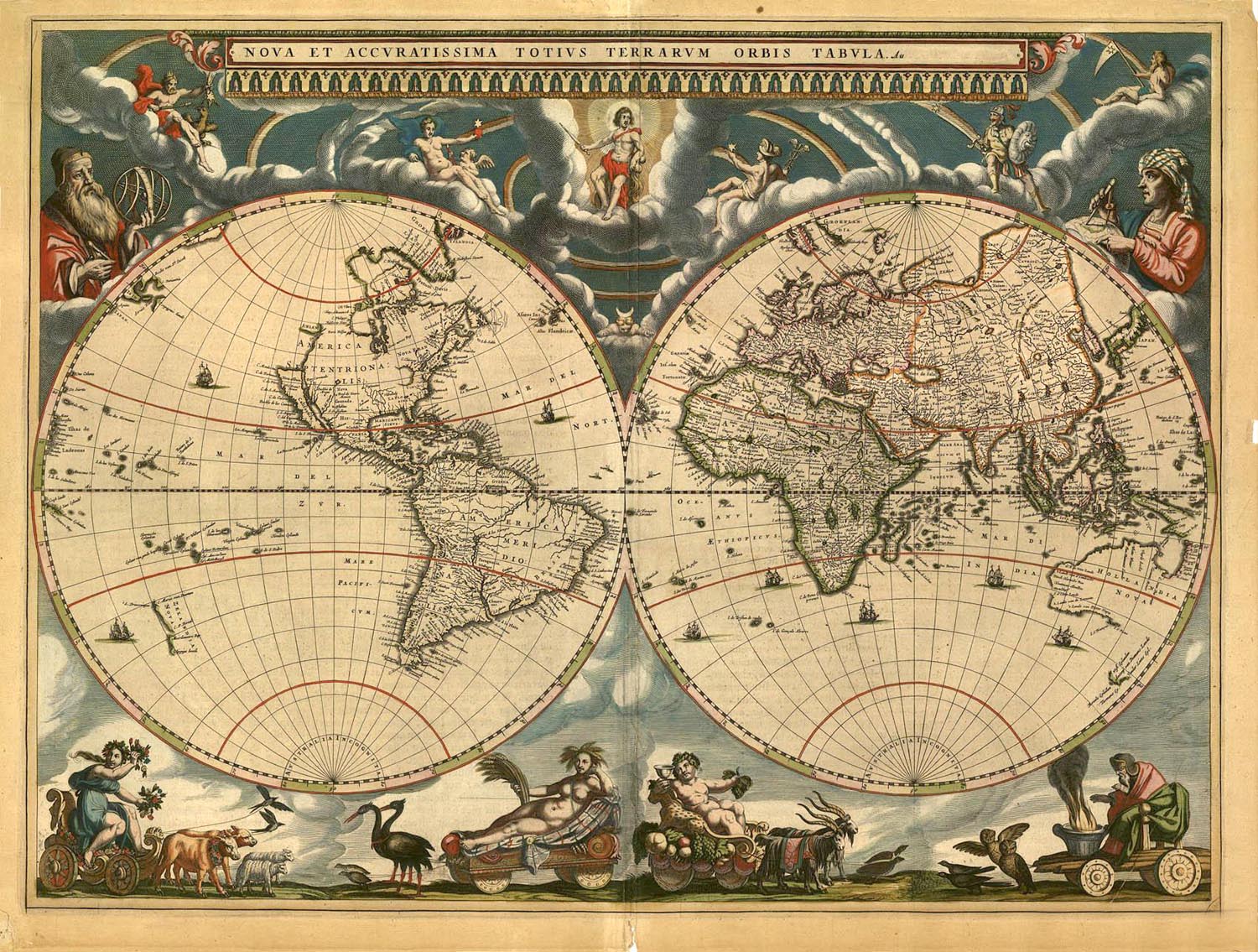I didn’t have much work to do today, so I spent a lot of time daydreaming about airline miles I’m going to accrue on business trips over the next few months and how I’m going to use them. I’ll have a free round-trip ticket to a fairly distant destination.
My daydreaming included a lot of poring over airline route maps, seeing where I could go and for how much. Map-gazing is an intoxicating activity, one I could do for hours on end. I was almost salivating today while doing it.
I know I’m not the only one who loves maps like this. In his early teens, my brother would nearly memorize the map of every backpacking trip we took. Elevation gain and loss, river crossings, campsites—he knew it all. He knew the name of the rock you just took a piss off of.
It’s funny maps should draw anyone in like this, because they’re manifestly unromantic. At least in contemporary atlases (not so a few hundred years ago), maps are more documentation than artwork. They’re meant to get the job done—to represent the data accurately.
The fascination comes from the way they allow you to so easily imagine yourself moving through them. Photos of a place are exciting, too, but a map provides an idea of continuity. On a map you get to envision a journey, whereas with photos you only envision a destination.
I look at maps of places I want to go, and I see a red dotted line marking my movement, just like in a movie from the ‘40s or ‘50s. It all seems impossibly easy. Getting from Istanbul to Rajasthan? All you have to do is wiggle your way down a few train tracks, maybe stopping for tea in Tehran and making a side trip for caviar in Baku. The OneWorld Alliance maps I was looking at are even more enticing. Vancouver and Hong Kong are connected by a straight line! How hard is it to travel down a straight line? You could do it this weekend.
Once I make definite plans to go somewhere, the map becomes my idea of the place. This always leads to surprises. I imagine that when I arrive, the experience of standing on the ground will be qualitatively different. I imagine the nature of the geography will be somehow more evident. I thought that on Sumatra I would sense I was on an island. I thought that in Thailand I would know I was in a really oddly shaped country. I thought that in Seoul I would feel the presence of the dark, backward state just north of me.
So I’m surprised whenever I arrive somewhere and realize it’s an actual place. It has the same gravity, the same distances, and the same curvature of the Earth as back home. The horizon is no closer. Having daydreamed so much over the map, I had gotten the impression I would be spending the trip observing myself from above. It’s a nice surprise, of course, since a map can’t be as interesting as the details on the ground. But it shocks me into remembering how big a place the world actually is.

No comments:
Post a Comment